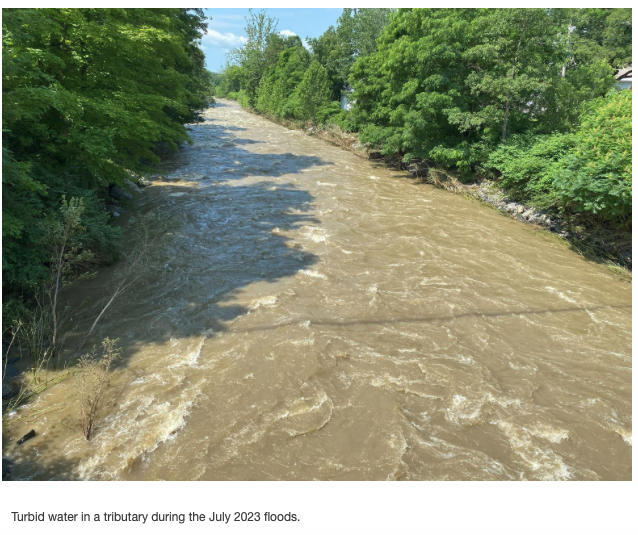In the face of extreme weather, isn’t it time to be proactive?
Establishment of New Hampshire environmental adaptation and resilience council vetoed on same day as floods again devastate the North Country.
By Kate Buckman, She/Her/Hers, River Steward, NH, Connecticut River Conservancy
July is proving to be a challenging time for the watershed and surrounding communities. A year ago on July 10th, 2023, we saw extreme and extensive flooding throughout Vermont and New Hampshire, which many are still recovering from. The flooding came on the heels of severe weather throughout the spring and in some communities impacted infrastructure that had not yet been repaired from extreme weather event damage in 2022. The wet year continued with rain and flooding, exacerbating impacts to recovery efforts, existing infrastructure, and the environment. This was followed by storms in December 2023, January 2024, and April 2024, for which Governor Sununu requested federal disaster aid. While not all events impacted all watersheds equally, there is a consistent and noticeable trend of extreme weather devastating the state with enough frequency that many communities cannot recover within the framework and timeline of aid available from federal and state agencies, NGOs, and contractors.
So it was with sadness, irritation, and a dose of painful irony that I read the statement from the Governor’s office vetoing SB543, a bill passed with bipartisan committee support that would have established a “state environmental adaptation, resilience, and innovation council” with the express purpose of bringing together experts from different agencies and organizations to foster “proactive planning and risk management strategies across state agencies to navigate environmental changes effectively.” The veto was signed on July 10th, 2024, the same day that the remnants of supercharged storm Beryl dropped lots of water and caused extensive damage and even loss of life throughout the northern parts of Vermont and New Hampshire – and on the anniversary of the 2023 floods from which many communities are still recovering. And, also ironically, that same day the Governor’s office also issued a press release announcing the approval of a federal disaster declaration for the April storms. A check of the FEMA website lists 10 declarations for NH from 2019 until now. Eight of them were for severe storms and flooding. Isn’t it time to be proactive rather than reactive in the face of repeat flooding?
In his statement, the Governor indicated that he did not feel the bill would effectively continue “environmental conservation and preservation” efforts, that the goals were “overly broad, vague, and impotent,” and that the bill would not have “responsibly balanced the needs of our citizens with our responsibility to future generations.” I would disagree. This bill was not only about protecting the environment, but creating a strategy to also protect our businesses, economy, community members, and health, now and for the future. Reading the text of the bill does not indicate to me that the goal was to increase land conservation, but rather to reduce the susceptibility of our communities (in both natural and built environments) to damage in the face of increasingly extreme weather and the impacts of climate change. Frankly, SB543 seemed a very modest effort to learn about needs, opportunities, and resources and to increase coordination and collaboration in helping New Hampshire be prepared for, and be resilient to, extreme weather events. A small effort, but clearly one that is needed.
New Hampshire deserves better than the status quo patchwork of programs that cannot respond to our needs quickly or nimbly enough.
As a New Hampshire resident, I am a bit jealous of the programs and policies enacted in Vermont to address these issues, including the recent passage of the “Flood Safety Act”. I remain hopeful that we can see similar efforts succeed in NH to protect both rivers and humans in future flood events. This is not just about the veto of a single bill, but rather the ability of our communities to continue to exist in the face of repeat catastrophic flooding. We can find a way forward to work with our rivers and chart a path to environmental resilience. We must, in order to protect what makes our watershed and communities so special.
My heart goes out to those who have been affected by the most recent spate of flooding. CRC reminds everyone to stay safe, stay out of floodwaters, and always check the USGS gage levels and reports from Great River Hydro for safety before venturing onto the Connecticut River.
Some Online Flood Resources in NH:

